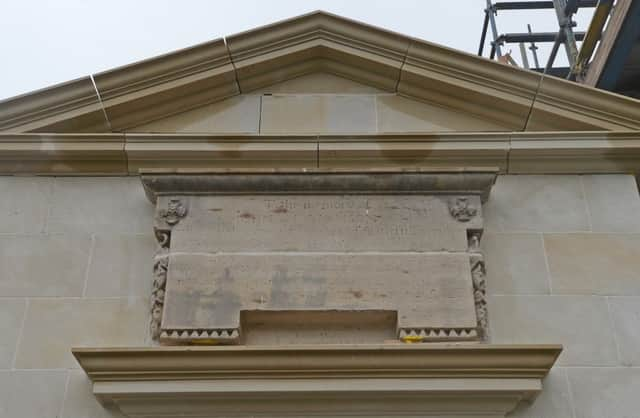Murdered gardener plaque reinstated at Botanic Garden


John Williamson was the head gardener at the Royal Botanic Garden from 1760 to 1780.
But he doubled as a customs officer and was murdered by smugglers whom he had chased on to Princes Street.
Advertisement
Hide AdAdvertisement
Hide AdThe Regius Keeper commissioned a large plaque to be added to the Botanic Cottage in which Williamson lived, inscribed in his memory.
The Garden moved from Leith Walk to its current home at Inverleith in 1823, and the memorial was put in to storage.
The building itself was recently dismantled and transported stone by stone to the current garden site, where it is being meticulously reassembled like a giant jigsaw puzzle.
And stonemasons have now reinstated the lost memorial to Williamson in its rightful place.
Botanics archivist Sutherland Forsyth said: “John Williamson is an important figure in the Gardens’ history. He became the principal gardener in 1760, and was a highly respected figure in Edinburgh.
“But he also had a part-time job as a customs officer, which could be dangerous.
“On the day he died, he tracked a group of smugglers from Leith up on to Princes Street. He intercepted one of the men and tried to get hold of the loot, but he was turned upon and left for dead.
“John Hope, the Regius Keeper at the time, was shocked and devastated, and commissioned a memorial.
Advertisement
Hide AdAdvertisement
Hide Ad“When the Garden relocated, the stone was taken down and Williamson’s story has largely been forgotten.
“Now, after nearly 200 years, people visiting this building will once again be able to remember this man who gave 20 years of his life to the Garden.”
The historic Botanic Cottage, designed by John Adam, was built in Leith Walk in 1764 as the gateway to the then site.
It provided accommodation for Williamson, his wife and their three children on the ground floor, as well as lecture space for students under the great botanist Professor John Hope, who was a leading character in the Scottish Enlightenment.
Students who were taught there included Benjamin Rush, one of the founding fathers of the US, Sir Lucas Pepys who was George III’s physician during his “madness” and Thomas Charles Hope, who discovered the element strontium and taught Charles Darwin.
The historic building faced demolition in 2008, but campaigners won a battle to take it down stone by stone instead so that it could be re-erected at Inverleith.
Each stone and timber was individually recorded, numbered and stored.
The building is now being re-erected as a state-of-the-art educational and community facility. It is expected to welcome its first students in nearly 200 years later this year.
Advertisement
Hide AdAdvertisement
Hide AdThe large stone plaque on the front reads: “To the memory of John Williamson, who during 20 years of faithful service as principal gardener in this place was no less respected for the good qualities suited to his station in life than esteemed for eminent skill in his profession. This monument is erected by John Hope, professor of Botany, 1781.”
Mr Forsyth said that Williamson should be remembered amongst all the famous figures who had been associated with the historic Botanic Cottage.
His role included preparing lectures and experiments for Hope, while he also helped tend the royal gardens at Holyrood Palace.
During his own lifetime, a section of the garden was named in his honour, alongside great botanists such as Carl Linnaeus.
When Williamson died early in the morning of September 23, 1780 the newspapers of the day reported the tragedy, and a £50 reward was put up for his murderer’s capture.
Mr Forsyth said: “John Williamson didn’t have a big education or a title, and he wasn’t a university scholar, but he was respected because of his skills.
“He was John Hope’s right hand man, executing Hope’s ideas and making the Garden a reality.
“We hope that the memorial will raise awareness of Williamson and his part in the history of the Garden, and help us discover more about his life.”